Fasteners: part 3
Zips, zip fasteners or zippers, were previously known as “hookless fasteners’, ‘lightning fasteners’ or ‘clap lockers’.
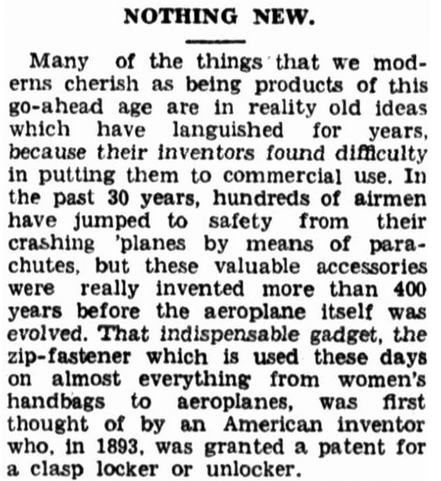
Daily Mercury (Macvkay,Qld), 21st August 1939 page 2.
The origins of the zip may date back to 1853, however the earliest successful type was made in 1893, designed by Whitcomb Judson as a shoe fastener. He established a company in America, the Universal Fastener Company, and his son-in- law, Gideon Sundback, would improve and patent the design several times, to improve the reliability.
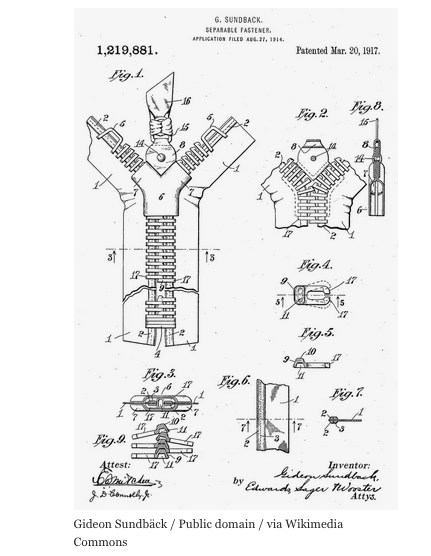
The design was further improved by a Swiz engineer, Martin Winterhalter. Wikipedia claims their use in clothing dates from around 1925, but descriptions of their use for clothing pre-dates that in print.
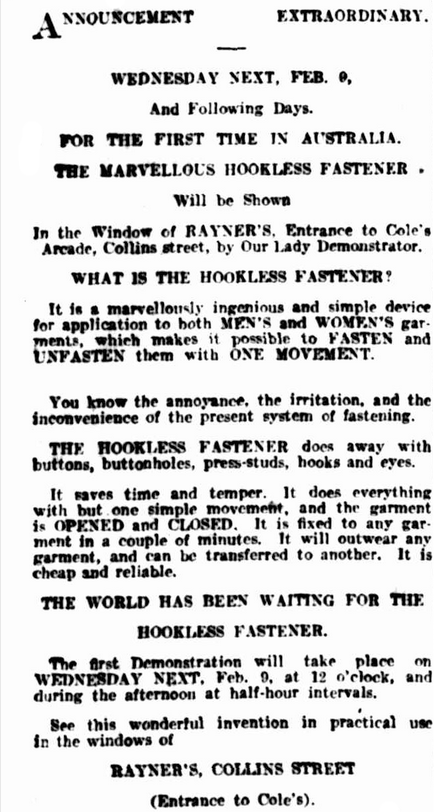
The Argus (Melbourne), 5th February 1916 page 8.
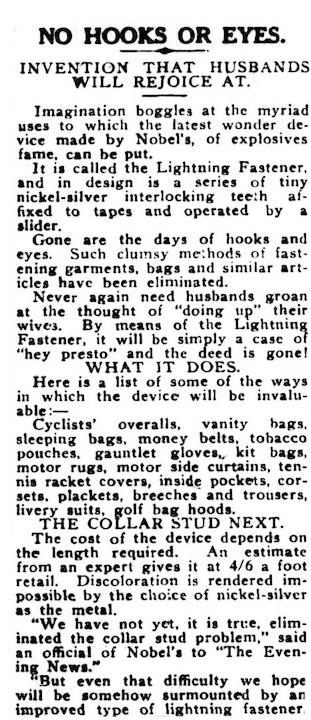
Cairns Post (Qld), 1st July 1922 page 10.
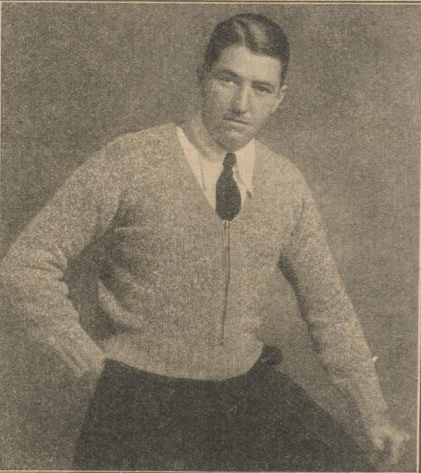
The Australian Woman’s Mirror, 20th June 1933 page 23. A lumber jacket with zip fastener to knit.
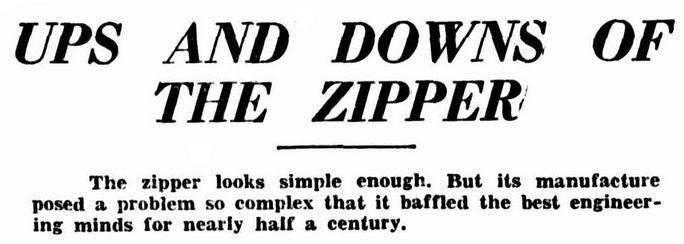
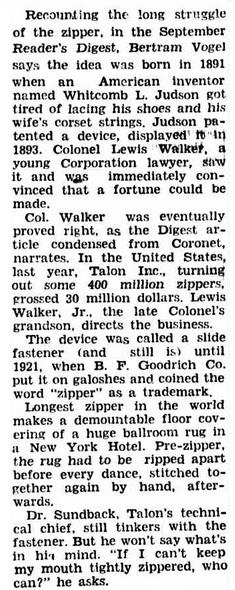
Goulburn Evening Post (NSW), 19th August 1949 page 5.
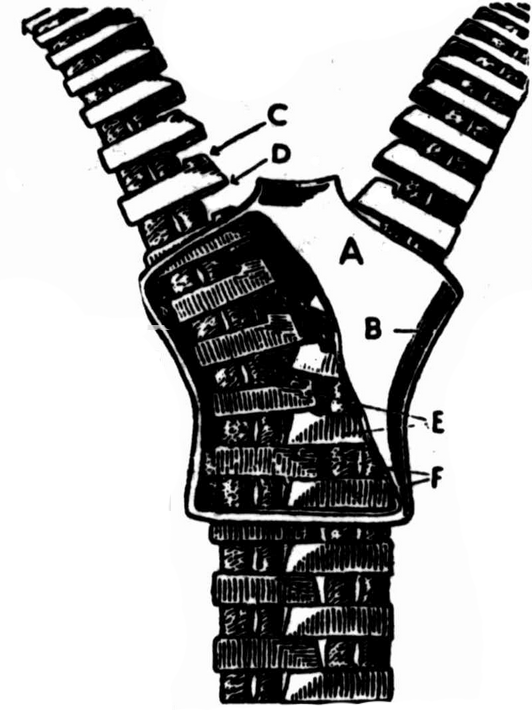
Chronicle (Adelaide), 17th July 1952 page 32. “The fastener consists of
two tapes with metal teeth attached to a cord sewn along the edge of the tape. A slider is fitted, and then top and bottom stops are clamped to the fastener to keep the slider in place. Each of the teeth has a small knob at the top, and a hollow on the underneath side. When the fastener is closed these teeth interlock and cannot be pulled apart. The job of the slider is to bend the tape at just the right angle to allow the knob of the top of each tooth to slip into the hollow of the corresponding tooth at the other side. In the enlarged diagram above, ‘A’ shows the body of the slider which is cut away. ‘B’ the shoulder which bends the tape at the required angle, ‘C’ shows the knob of a tooth, and ‘D’ the
hollow. ‘E’ and ‘F’ are teeth which are just about to interlock.”
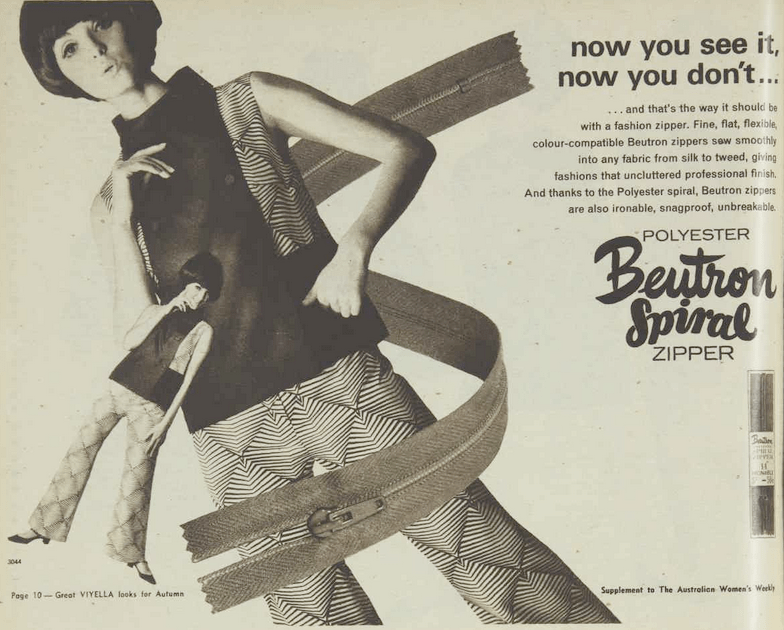
For all comments or queries, please use the Contact page.
